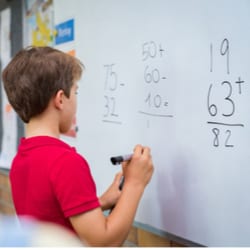High Impact Teaching Strategies (HITS)
Excellence in teaching and learning.
About HITS
The High Impact Teaching Strategies (HITS) are 10 instructional practices that increase student learning. The HITS are evidence-based, drawing on research both in Australia and internationally.
These resources offer examples of how to use the HITS with a focus on developing students’ numeracy and presents examples of HITS best practice from Birth to Level 10.
The HITS have the strongest impact on children and young people’s learning when embedded into an ongoing improvement cycle in your professional learning community.
Using HITS
For teachers
For beginning teachers, the HITS are a bank of reliable instructional practices that can be used with confidence. For experienced teachers, these numeracy examples can add to your understanding of the HITS you are already using, and suggest new ways to use them in the classroom.
For professional learning communities
By using the HITS to build your pool of knowledge, professional learning communities can anchor interventions in evidence-based practices and so increase the likelihood of numeracy interventions being effective.
For school leaders
HITS are a professional learning opportunity. The HITS are linked to each other, and connected to a broader repertoire of teacher numeracy skills and knowledge. They can be connected to collaboration between teachers and integrated into classroom and school planning around curriculum, instruction and assessment.
Get an overview of the high impact teaching strategies (HITS) and watch case study videos.
The 10 High Impact Teaching Strategies (HITS)
The resources below offer examples of how to use the ten teaching strategies with a focus on developing students’ numeracy and presents examples of HITS best practice.
Setting goals
Clear learning intentions and
goals clarify what success looks like
Worked examples
Worked examples demonstrate the steps required to complete a task or solve a problem
Questioning
Questioning engages students, stimulates interest and curiosity in the learning, and makes links to students’ lives
Structuring lessons
A lesson structure maps teaching and learning that occurs in class
Collaborative learning
Students work in small groups and everyone contributes to learning tasks
Feedback
Feedback informs a student and/or teacher about the student’s performance relative to learning goals
Differentiated teaching
Differentiated teaching are methods teachers use to extend the knowledge and skills of every student in every class, adjusting for content, process and product
Explicit teaching
Explicit teaching practices show students what to do and how to do it
Multiple exposures
Students are given multiple opportunities to encounter, engage with, and elaborate on new knowledge and skills
Metacognitive strategies
Metacognitive strategies teach students to think about their own thinking


